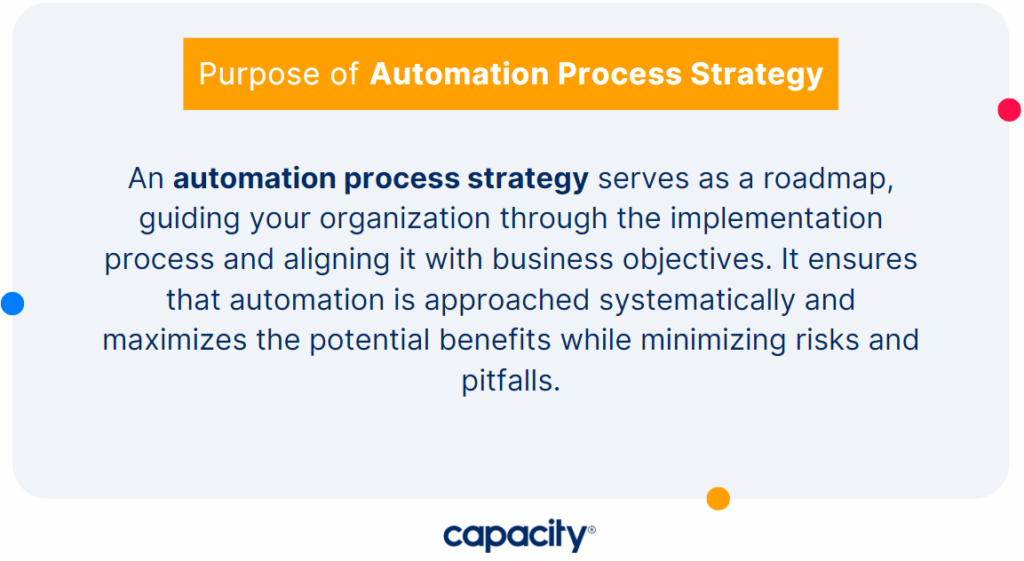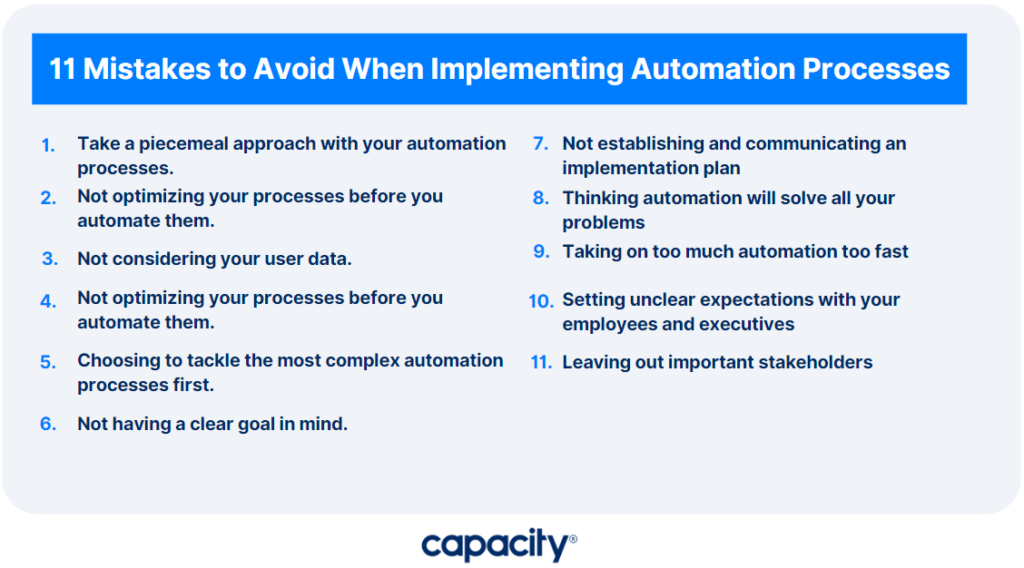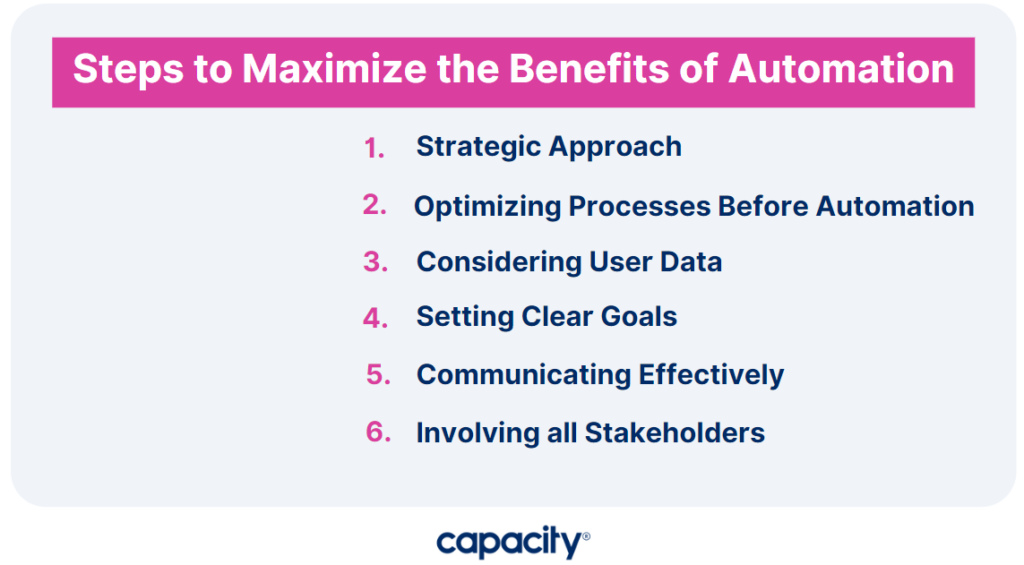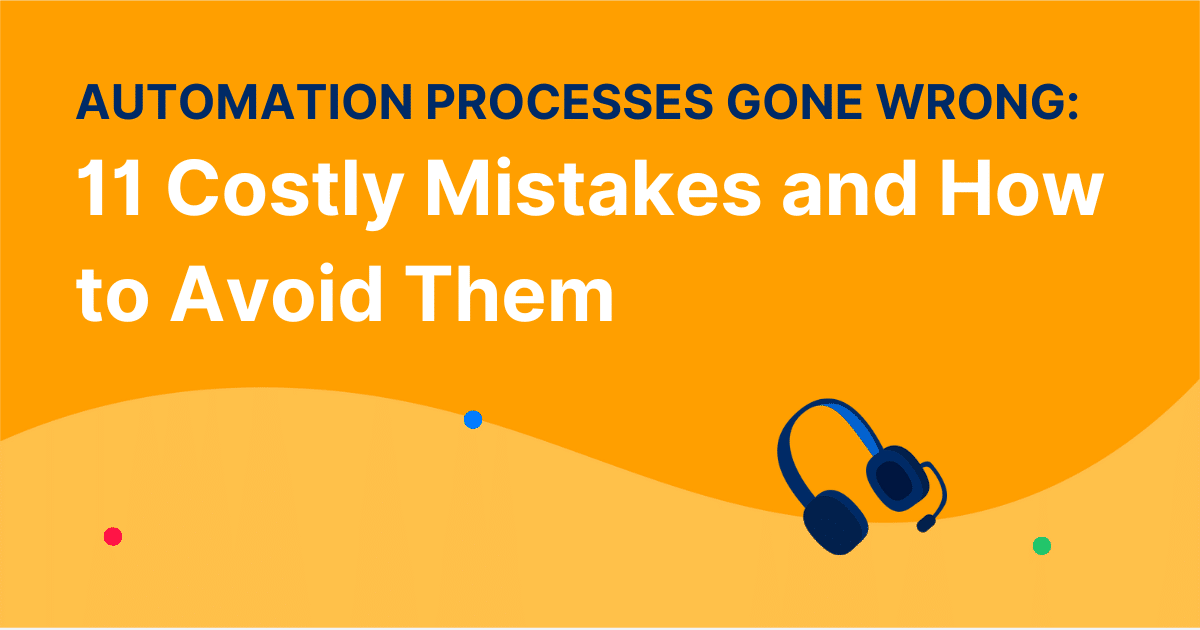Automation processes have the potential to revolutionize your business operations, driving efficiency and productivity. However, without careful planning and execution, they can also lead to costly mistakes and unintended consequences. In this article, we will explore the common pitfalls to avoid when implementing automation processes. By highlighting these mistakes, explaining their implications, and providing alternative approaches, we aim to help Customer Operations and IT professionals navigate the automation journey successfully. So let’s dive in and learn from the mistakes of others to ensure a smooth and effective automation implementation.
The Importance of an Automation Process Strategy

Before delving into the specific mistakes to avoid, it’s crucial to emphasize the importance of having a clear and well-defined automation process strategy. An automation process strategy serves as a roadmap, guiding your organization through the implementation process and aligning it with business objectives. It ensures that automation is approached systematically and maximizes the potential benefits while minimizing risks and pitfalls.
11 Mistakes to Avoid When Implementing Automation Processes

Don’t do this: Take a piecemeal approach with your automation processes
Automation should not be treated as isolated projects but rather as an integrated system. Taking a piecemeal approach can lead to disjointed processes, data silos, and inefficiencies. Instead, adopt a holistic view, considering the end-to-end automation journey and how different processes and systems can be seamlessly connected.
Do this: Develop a comprehensive automation roadmap and prioritize processes
Create a roadmap that outlines the automation journey, identifying key processes for automation and their interdependencies. Prioritize processes based on their potential impact and complexity, ensuring a structured and systematic approach to implementation.
Don’t do this: Not optimizing your processes before you automate them
Automating inefficient or broken processes will only amplify existing issues. Before implementing automation, thoroughly analyze and optimize your processes to eliminate bottlenecks, reduce waste, and enhance efficiency.
Do this: Conduct a process audit and reengineering to optimize efficiency
Evaluate your existing processes, identify areas for improvement, and redesign them to achieve optimal efficiency. Streamline workflows, eliminate unnecessary steps, and standardize processes before introducing automation.
Don’t do this: Not considering your user data
Failing to understand and analyze user data can lead to ineffective automation. Neglecting user preferences, pain points, and behavior can result in solutions that do not meet their needs or fail to deliver the desired outcomes.
Do this: Conduct user research and involve stakeholders in the automation process
Gather feedback from end-users and involve stakeholders throughout the automation journey. Understand their requirements, pain points, and expectations to design automation processes that align with their needs and deliver tangible value.
Don’t do this: Choosing to tackle the most complex automation processes first
Starting with complex processes can overwhelm your team and increase the likelihood of errors and delays. Taking on too much complexity at the beginning can hinder progress and diminish confidence in the automation initiative.
Do this: Begin with low-hanging fruit and gradually increase complexity
Start with simpler processes that have a high impact and demonstrate quick wins. Build momentum and confidence by delivering tangible results early on. As your team gains experience and proficiency, gradually tackle more complex automation processes.
Don’t do this: Not having a clear goal in mind
Implementing automation without a clear goal or purpose can lead to aimless efforts and wasted resources. Without a well-defined objective, it becomes challenging to measure success and assess the effectiveness of automation.
Do this: Set clear objectives and Key Performance Indicators (KPIs)
Define specific goals for your automation initiative, such as reducing manual effort by a certain percentage or improving response time. Establish KPIs to measure progress and regularly evaluate the impact of automation on business outcomes.
Don’t do this: Not establishing and communicating an implementation plan
Lack of planning and communication can result in confusion, resistance, and disruption during the automation implementation process. It is essential to have a well-defined plan that outlines roles, responsibilities, timelines, and milestones.
Do this: Develop a comprehensive implementation plan and communicate effectively
Create a detailed implementation plan that addresses all aspects of automation, including resources, timelines, training, and support. Communicate the plan to all stakeholders, ensuring transparency and alignment across the organization.
Don’t do this: Thinking automation will solve all your problems
Automation is a powerful tool, but it is not a magic solution to all challenges. Relying solely on automation without considering other factors such as human expertise, creativity, and adaptability can limit the potential benefits.
Do this: Embrace automation as an enabler and augment human capabilities
View automation as a complement to human efforts, enhancing productivity and enabling employees to focus on higher-value tasks. Encourage collaboration between humans and automation, leveraging the strengths of each.
Don’t do this: Taking on too much automation too fast
Implementing automation across multiple processes simultaneously can strain resources, overwhelm teams, and lead to errors. Rapid expansion without proper planning and support can jeopardize the success of the automation initiative.
Do this: Adopt a phased approach and scale gradually
Start with a pilot project to validate the effectiveness of automation before scaling up. Gradually expand automation efforts, allowing time for learning, refinement, and adjustment based on feedback and insights.
Don’t do this: Setting unclear expectations with your employees and executives
Failure to communicate the goals, benefits, and impact of automation to employees and executives can create uncertainty and resistance. Unclear expectations can result in misunderstandings and hinder the adoption and acceptance of automation.
Do this: Educate and involve employees and executives in the automation journey
Provide comprehensive training and education to employees and executives about the purpose and benefits of automation. Involve them in the decision-making process and address any concerns or misconceptions they may have
Don’t do this: Leaving out important stakeholders
Neglecting to involve critical stakeholders, such as end-users, IT teams, and process owners, can lead to misalignment and inadequate support for automation initiatives.
Do this: Engage all relevant stakeholders and foster collaboration
Identify and involve all stakeholders throughout the automation journey. Collaborate with them to understand their perspectives, gather input, and ensure their buy-in and commitment to the automation processes.
Choosing the right vendor to partner with: Choose Capacity
Selecting the right vendor for automation solutions is crucial for the success of your automation initiative. Capacity, a leading provider of automation platforms, offers robust and user-friendly solutions that can support your organization in the implementation process.
Capacity’s platform combines AI-powered automation with natural language understanding, enabling organizations to automate tasks, streamline workflows, and enhance productivity. With intuitive interfaces and advanced capabilities, Capacity empowers businesses to achieve their automation goals effectively.

Avoiding these common mistakes when implementing automation processes is essential for a successful automation journey. By taking a strategic approach, optimizing processes before automation, considering user data, setting clear goals, communicating effectively, and involving all stakeholders, you can maximize the benefits of automation while minimizing the risks. Remember that automation is a tool to augment human capabilities, enhance efficiency, and drive business outcomes. Choose the right automation partner like Capacity to support your organization’s automation endeavors. Embrace automation, learn from the mistakes of others, and pave the way for a streamlined and successful automation transformation. Try Capacity for free now!

Automate Your Work
Capacity’s enterprise AI chatbot can help:
- Answer FAQs anytime, anywhere
- Find relevant documents within seconds
- Give surveys and collect feedback





